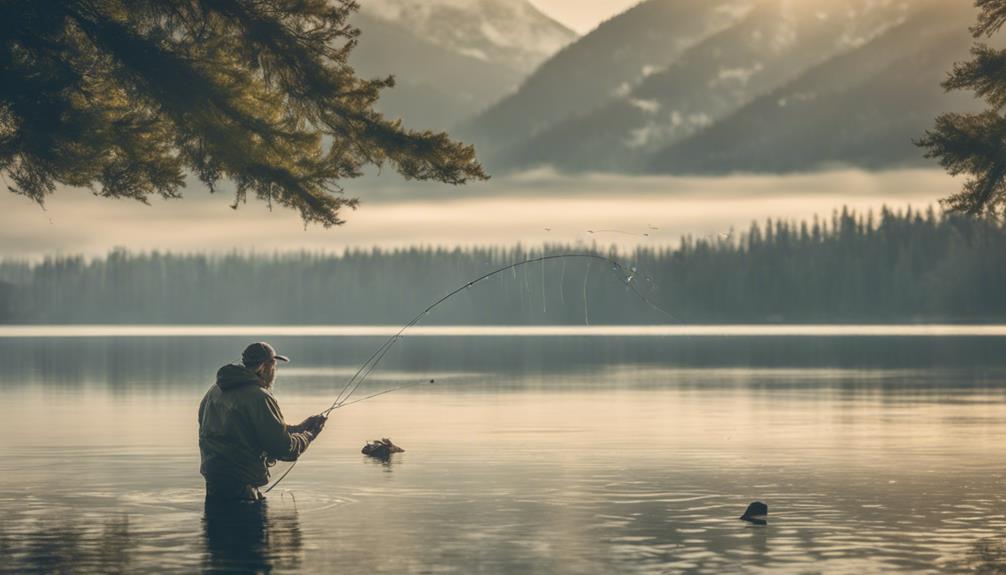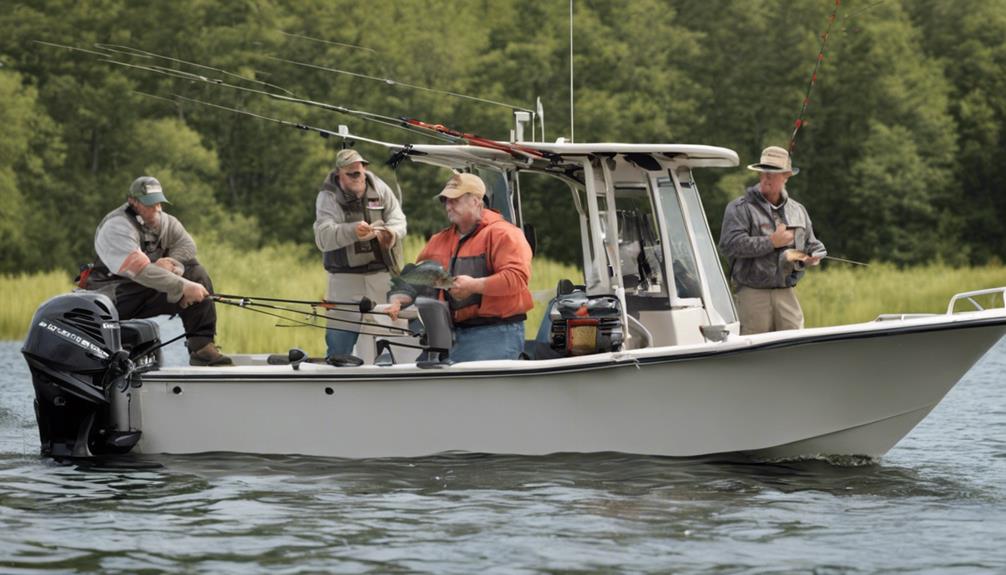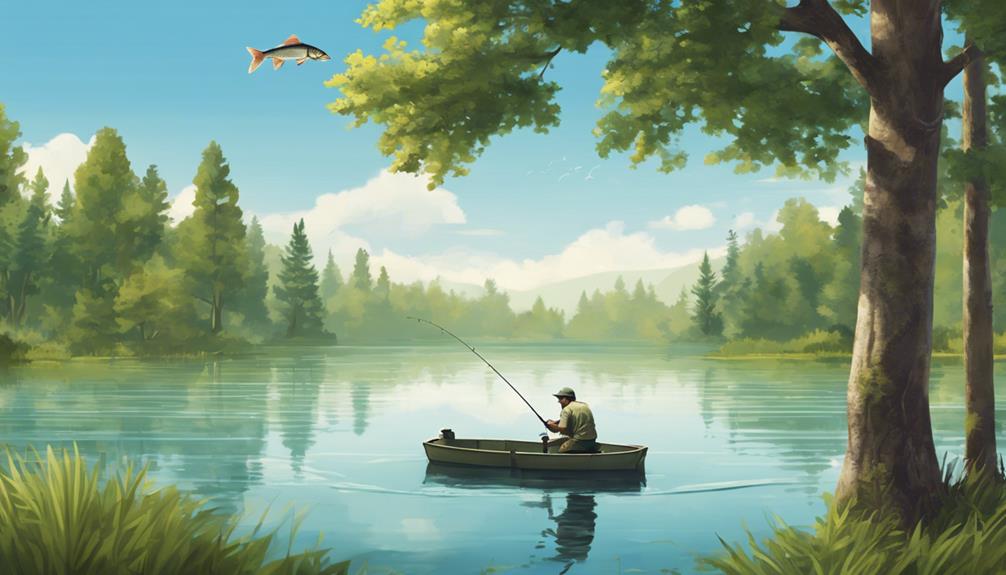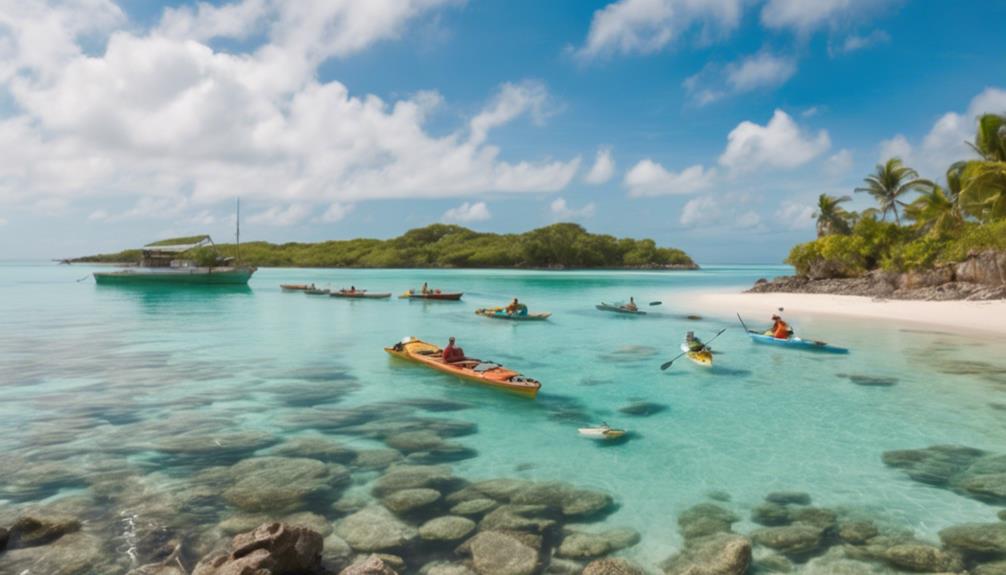In the vast ocean of conservation efforts, fishing conservation laws act as a lighthouse guiding sustainable practices.
Imagine a world where the oceans are teeming with life, and fish populations flourish. But what happens when these resources are exploited beyond their limits? The consequences ripple far beyond the surface, affecting ecosystems, economies, and livelihoods.
So, why are fishing conservation laws so crucial? Let's explore how these regulations serve as a lifeline for our marine environments and the communities that depend on them.
Importance of Fishing Conservation Laws
Fishing conservation laws play a crucial role in protecting our marine ecosystems and ensuring sustainable fish populations for future generations. Conservation awareness is key to understanding the delicate balance of our oceans and the impact of overfishing. By implementing these laws, you contribute to the preservation of marine life and habitats for the long term.
Understanding the importance of sustainable practices is essential in maintaining healthy fish populations. Conservation laws help regulate fishing activities, such as implementing catch limits and protected areas, to prevent depletion of fish stocks. By following these regulations, you actively participate in promoting sustainable fishing practices that allow fish populations to replenish and thrive.
Conservation awareness isn't just about protecting fish species but also about safeguarding the entire ecosystem. By conserving fish populations, you contribute to maintaining the biodiversity of marine environments and preserving the food chain. Sustainable practices ensure that fishing activities don't disrupt the natural balance of marine ecosystems, allowing for a more resilient and diverse ocean environment.
Benefits of Sustainable Fishing Practices
To fully appreciate the significance of sustainable fishing practices, consider the positive impacts on marine ecosystems and fish populations. By implementing sustainable fishing methods, such as setting catch limits and using selective fishing gear, you directly contribute to the preservation of marine biodiversity. This means that a variety of fish species can thrive in their natural habitats, maintaining the delicate balance of the ecosystem.
Moreover, sustainable fishing practices enhance ecosystem resilience. By avoiding overfishing and minimizing bycatch, you help ensure that marine ecosystems can withstand environmental changes and disturbances. When fish populations are kept at healthy levels through sustainable practices, they can better adapt to challenges such as climate change or pollution, ultimately benefiting not just the fish themselves, but also the entire ecosystem they're part of.
In essence, your choice to support sustainable fishing practices plays a crucial role in safeguarding marine biodiversity and promoting ecosystem resilience. By valuing the long-term health of our oceans and the creatures that inhabit them, you contribute to a sustainable future where both marine life and fishing communities can thrive harmoniously. Remember, every decision you make as a consumer or a fisher has the power to make a positive impact on our oceans.
Role of Government in Fisheries Management
The effective management of fisheries by government authorities is essential for ensuring the sustainability of marine resources and the well-being of fishing communities. Government intervention plays a crucial role in overseeing and regulating fishing activities to prevent overexploitation of marine resources. Here's why government involvement is vital in fisheries management:
- Setting Catch Limits: Governments establish catch limits to prevent overfishing and ensure that fish populations can replenish themselves adequately.
- Monitoring Compliance: Government agencies monitor fishing activities to ensure that fishermen adhere to regulations regarding catch sizes, fishing seasons, and prohibited areas.
- Enforcing Regulations: Through patrols and inspections, government officials enforce fishing regulations to deter illegal practices that can deplete marine resources.
- Implementing Conservation Measures: Governments introduce conservation measures such as marine protected areas and habitat restoration projects to safeguard the marine ecosystem and promote sustainable resource management.
Without government oversight and intervention, the delicate balance of marine ecosystems can be disrupted, leading to the decline of fish stocks and the livelihoods of fishing communities. Through active participation in fisheries management, governments play a crucial role in preserving marine resources for future generations.
Impact of Overfishing on Marine Ecosystems
Government intervention in fisheries management is crucial to address the detrimental impact of overfishing on marine ecosystems. Overfishing disrupts the delicate balance of marine biodiversity, leading to cascading effects on ecosystem health. When certain fish species are overexploited, it can result in population declines that reverberate throughout the food chain. This imbalance not only affects the targeted species but also their predators and prey, impacting the overall ecosystem dynamics.
Marine biodiversity plays a vital role in maintaining ecosystem resilience and productivity. Overfishing can lead to a loss of biodiversity as certain species are disproportionately harvested, causing ripple effects on the entire ecosystem. When key species decline in numbers, it can trigger a chain reaction that alters habitat structure and species interactions. This can ultimately compromise the ecosystem's ability to adapt to environmental changes and recover from disturbances.
Furthermore, ecosystem health is closely tied to the sustainability of fisheries. Overfishing can deplete fish populations to unsustainable levels, jeopardizing the long-term viability of fisheries. By implementing effective conservation measures such as catch limits and size restrictions, governments can help mitigate the impacts of overfishing and promote the recovery of marine ecosystems. Protecting marine biodiversity and ensuring ecosystem health are essential for the continued well-being of our oceans and the countless species that depend on them.
Enforcement of Catch Limits and Size Restrictions
Amid concerns over unsustainable fishing practices, vigilantly enforcing catch limits and size restrictions is essential to safeguard marine biodiversity and ecosystem health. By ensuring compliance monitoring and enforcement of these regulations, authorities can effectively manage fish populations and prevent overexploitation.
Here are key reasons why enforcement of catch limits and size restrictions is crucial:
- Compliance Monitoring: Regular patrols and inspections help ensure that fishermen adhere to catch limits and size restrictions set by conservation laws. This active monitoring discourages illegal fishing practices and promotes sustainable harvesting.
- Enforcement Actions: Swift and strict enforcement measures, such as fines or license suspensions, deter individuals from violating catch limits and size regulations. Consistent enforcement sends a clear message that conservation laws must be respected to maintain healthy fish stocks.
- Data Collection: Monitoring and documenting catches provide valuable insights into fish populations and trends. Accurate data collection enables authorities to assess the effectiveness of existing regulations and make informed decisions for future conservation efforts.
- Assessment Strategies: Analyzing data on catch sizes and quantities helps evaluate the impact of enforcement actions on fish populations. Through systematic assessments, authorities can adjust catch limits and size restrictions to better protect vulnerable species and maintain ecosystem balance.
Conservation Efforts for Endangered Fish Species
To ensure the protection and recovery of endangered fish species, it's imperative to implement targeted conservation efforts that focus on their specific habitat requirements and population dynamics. Habitat restoration plays a crucial role in aiding the survival of endangered fish species by creating or enhancing environments essential for their reproduction and growth. By restoring degraded habitats, such as wetlands or spawning grounds, we can help these fish populations thrive once again.
Population monitoring is another vital aspect of conservation efforts for endangered fish species. Regularly tracking population sizes and trends allows scientists and conservationists to assess the effectiveness of conservation measures and adjust strategies accordingly. Through population monitoring, we can ensure that these endangered fish species are recovering and not facing further decline.
Breeding programs are also instrumental in conserving endangered fish species. By breeding these fish in controlled environments, researchers can bolster populations and reintroduce individuals into the wild, increasing genetic diversity and overall resilience.
Additionally, implementing fishing restrictions is essential to protect endangered fish species from overexploitation. By setting catch limits and regulating fishing practices in critical habitats, we can prevent further harm to these vulnerable populations and give them a chance to recover.
Economic Benefits of Fishing Regulations

Understanding the economic benefits of fishing regulations is essential for demonstrating the value of conservation efforts in sustaining both fish populations and the livelihoods of those dependent on fishing industries. By implementing and adhering to fishing regulations, the following benefits can be realized:
- Job Creation: Fishing regulations help maintain healthy fish populations, ensuring a sustainable supply of fish for commercial fishing. This, in turn, leads to the creation of jobs in the fishing industry, including roles in fishing, processing, and distribution.
- Tourism Revenue: Sustainable fishing practices supported by regulations attract tourists interested in recreational fishing and eco-tourism. This influx of visitors boosts local economies through spending on accommodations, dining, and other tourist activities.
- Sustainable Practices: Fishing regulations promote sustainable fishing practices that prevent overfishing and habitat destruction. By ensuring that fish populations aren't depleted beyond recovery, these regulations support the long-term viability of fishing industries.
- Economic Growth: Ultimately, fishing regulations contribute to overall economic growth by preserving fish stocks, protecting marine ecosystems, and maintaining a balanced environment. This stability fosters a reliable fishing industry that can continue to thrive for generations to come.
Community Involvement in Conservation Initiatives
Community involvement plays a crucial role in conservation initiatives, fostering a sense of responsibility and collective action towards preserving natural resources. Volunteer engagement is a key aspect of community involvement in conservation. By participating in volunteer programs such as beach clean-ups, tree planting events, or wildlife habitat restoration projects, individuals actively contribute to the protection and restoration of ecosystems. This hands-on approach not only benefits the environment but also instills a sense of pride and ownership in community members, fostering a long-term commitment to conservation efforts.
Stakeholder collaboration is another vital component of community involvement in conservation initiatives. Bringing together various stakeholders such as government agencies, non-profit organizations, businesses, and local communities allows for a more comprehensive and integrated approach to conservation. By working together towards a common goal, stakeholders can leverage their unique resources, expertise, and networks to implement more effective and sustainable conservation strategies. Additionally, involving community members in decision-making processes ensures that conservation initiatives are tailored to meet the specific needs and priorities of the local area.
Frequently Asked Questions
How Do Fishing Conservation Laws Vary Between Different Countries and Regions?
Fishing conservation laws vary between countries and regions due to cultural differences and regulations. Some nations prioritize strict quotas and protected marine areas, while others focus on community-based management.
International cooperation is essential for sustainability, as fish populations migrate across borders. Collaborative efforts help establish common conservation goals and ensure the health of marine ecosystems for future generations.
What Are Some Common Challenges Faced in Enforcing Fishing Conservation Laws?
When enforcing fishing conservation laws, common challenges include poaching prevention and allocating resources effectively. Strategies for enforcement involve increasing patrols, utilizing technology, and cooperating with other agencies.
Public awareness campaigns play a crucial role in educating communities about the importance of conservation.
How Do Fishing Conservation Laws Impact Recreational Fishing Activities?
Fishing conservation laws can affect recreational fishing activities in various ways. They play a crucial role in preserving fish populations, ensuring sustainable fishing for future generations. By maintaining healthy fish stocks, these laws support conservation efforts and promote a thriving ecosystem.
Additionally, they can impact the economy by bolstering the recreational fishing industry, attracting tourists, and generating revenue for local businesses that rely on fishing-related activities.
What Role Do Non-Governmental Organizations Play in Promoting Fishing Conservation Efforts?
NGOs are pivotal in promoting fishing conservation efforts. They drive awareness campaigns, engage communities, and spearhead fundraising initiatives. These organizations play a crucial role in advocating for sustainable fishing practices and marine conservation.
How Do Advancements in Technology Influence the Effectiveness of Fishing Conservation Laws?
Advancements in technology have greatly enhanced the effectiveness of fishing conservation laws. New tools like GPS tracking and sonar systems help monitor and enforce regulations.
Drones provide aerial surveillance, aiding in the protection of marine reserves. By integrating these technological innovations with conservation strategies, authorities can better manage fish populations and habitats.
As a result, fishing activities can be regulated more efficiently, contributing to the overall sustainability of marine ecosystems.
Conclusion
In conclusion, fishing conservation laws are crucial for preserving our marine ecosystems and ensuring sustainable fishing practices. By enforcing catch limits, size restrictions, and conservation efforts, we can protect endangered fish species and maintain a healthy balance in our oceans.
Government involvement, community participation, and economic benefits all play a role in the success of these regulations.
Remember, your actions can make a difference in the future of our fisheries.



